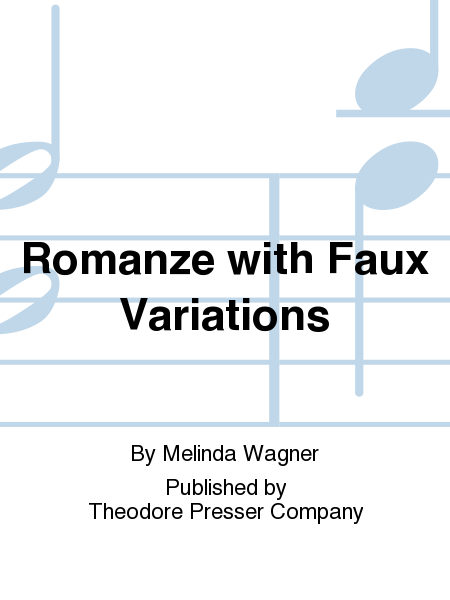Romanze With Faux Variations
Piano Trio No. 2
-
Ships in 2 to 3 weeks
Details
Description
SKU: PR.114412360
Piano Trio No. 2. Composed by Melinda Wagner. Saddle. Contemporary. Set of Score and Parts. With Standard notation. Composed 2003. 28+7+8 pages. Duration 13 minutes. Theodore Presser Company #114-41236. Published by Theodore Presser Company (PR.114412360).UPC: 680160017911. 8.5 x 11 inches.
Network for New Music, the incomparable ensemble which has, in its first 20 years, commissioned, premiered, and presented more than 500 new and innovative works, has recorded Melinda Wagner's second piano trio on Albany Records (Troy838). Of this recording, David Hurwitz (at classicstoday.com) writes, "Melinda Wagner's Romanze with Faux Variations is a single-movement piano trio in several loosely connected episodes. The cute title basically says it all: the episodes aren't really variations in the strict sense, but it all hangs together and features some very exciting ensemble writing in the process." Romanze joins our growing catalog of works by Melinda Wagner, recipient of the 1999 Pulitzer Prize in Music.
The glorious combination of violin, cello and piano has always been one of my favorites. The violin and cello together produce nearly the entire range of the orchestra (actually, the cello alone has an extraordinary reach). Each is capable of invoking high drama, poignancy, anger, sadness, light-heartedness, and on and on.I am particularly fond of the violin’s lovely, gutsy bass voice, and the wonderful, soaring soprano of the cello and find myself using these ranges frequently. Joined by the almost orchestral voice of the piano, and the unifying “wash” of sound provided by its sustaining pedal, this ensemble offers a rich variety of sonorities as well as a never-ending range of expressive possibilities. It is scary writing for the piano trio because it is so beautiful, and there are so many choices! It is also fun and highly rewarding; certainly it was a great pleasure to write for such a wonderful group of musicians.The core of the piece consists of a set of thorny, rhythmically-driven, sometimes highly contrapuntal episodes. Quite without my planning it, each episode seemed to want to be varied, yet the music to follow never ended up being more than an imposter variation, or, put more gently, simply another episode with the potential for being varied (hence the word “faux” in the title). It is not important for the listener to hear the piece in this way, but only to know that my hearing it this way helped to generate ideas as I was working. The piece begins with a quiet and sad melody for violin into which the cello gradually weaves itself. A fragmented version of this tune returns at the end, thereby providing the other side of the work’s “frame.”Romanze with Faux Variations (2003) is dedicated to the Network for New Music.

 Share
Share